Day Three
Settling in to the rhythm
5/27/23
I woke to cold. I woke to pain. I woke to a train and the magic of fog sliding across the water’s surface in a swirling ballet. I stood there just shy of shivering watching the thin veil of fog rush downstream one moment, and then in the next chase itself upstream. The sun hadn’t yet started coming up really, and there was just a breath of morning that was completely silent. It seemed the more I stirred, the more the world woke around me. I finally got moving when a V of geese honked overhead. I wrapped up in my blanket while I made breakfast and considered the fog and how and why it moved the way it did. Turns out this kind of fog has a name and is called advection fog which is a nice thing to know.
The night before had made it down to 58 degrees—colder than I had expected. Pitching the Lawson as a tent helped prevent the cold-butt common to hammock camping, but I hadn’t put the fly on, and that let in the cold. I made a note to have Sara bring me my underquilt for my halfway equipment drop. The night on the rocks wasn’t so bad, but my right shoulder and wrist were starting to give me trouble as the pain settled deep into my body. I anticipated this to some extent as mostly unavoidable, but I came prepared with Aleve.
While packing the kayak for launch, the sun finally crested the trees. I had been begging all morning for it to make an appearance, and those first few rays were sweet and tender like a good hug. The V of geese flew back over with a ruckus, and a red-tailed hawk screamed at me in such a way I figured I should hurry on up and get on with it. I was no sooner launched than out of the mist ahead I saw a deer swimming from our island back to the mainland. This happened right where Buck’s Creek meets the Cahaba, and I couldn’t help but laugh a little a finding a buck at Buck’s Creek.
Now starting my 3rd day on the river and it being the 5th day since it had flooded, the water was noticeably clearer and shallower at that too. And while it was good to see the murkiness settle down, it also meant I could now start to see the rock shelves lurking beneath the surface. Watching the rocks slide by is one of my favorite things about kayaking the Cahaba. Looking into the depths of still, opaque water gets sort of boring at times. But to look below and see an entire world of geology just below the crystalline surface is enthralling. The upper region of the Cahaba is above the Fall Line which means it’s a part of the same formation that made the Appalachian Mountain range. Way back when the Appalachian Mountains formed, one tectonic plate slammed into and up under another. This results in a slanted angle of our geological layers. You can see this clearly if you have ever driven through “The Cut” of Red Mountain Expressway. What this means for the river is a lot of rocks all angled up, and because the Cahaba switchbacks so frequently—going first one way and then curving around another—sometimes you’re kayaking over rocks angled up toward you, sometimes you’re running parallel to them, and then around the next bend you’re kayaking over rocks angled away from you.
I’d been passing over them this whole time, but they were too submerged to affect my travels. Seeing them now and watching the water levels drop meant that I was both in for a show and in for a fight. I knew too that my most involved stretch of river (aside from the dams of day one) was still waiting ahead of me down near the shoals of Bibb County.
When I reached the train trestle of my lullaby the night prior (right before Shelby County 52) it was empty, but something in my bones told me that if I just lingered here a moment, I might see train. The bones were right. Its approach was first the deep rumble of low and far-off thunder then it swelled with a rush and clamored across the tracks immediately overhead. What a cool way to start the day.
Much of the first part of this stretch of river was expensive houses and the hum of lawnmowers before plunging into a sparse wilderness. Portions of this stretch felt very still and devoid of wildlife. I encountered a few herons and hawks but was surprised at the lack of turtles which had seemed so abundant on my first couple of days. At once point I passed where a tornado had crossed the water. Snapped off treetops languished in the river while on either side of the bank the spines of their trucks still pointed to the sky which brought them their trouble.
I spent most of the day hungry. There were not a lot of good stopping points, and I told myself it wasn’t worth stopping when I would be setting up camp soon. Plus, the food really wasn’t worth writing home about. I had opted for prepared freeze-dried meals because I didn’t want to have to reinvent the wheel when it came to sustenance. They all had such lovely options and names: chicken tikka masala, beef stroganoff, country chicken pot-pie, al pastor with cilantro lime rice, and more! All very promising sounding meals, but the reality is they all tasted exactly the same: like a boiled mush of sadness. The lack of texture and flavor was a slow-dawning horror that only increased the further I got into my trip. I didn’t think fresh food would have done well baking in the dry well in almost 90-degree heat and direct sun, but I was kicking myself for not at least trying. I added apples to the list for the equipment drop.
I turned into camp a bit early but found another secluded island. A lack of trees meant another night on the warm rocks. I was slowly learning how long it took to make and break camp. And from start to finish, I was putting in about an hour and a half at the start and end of my day playing house—around three hours total. That’s to scout camp, unpack, repack, make food, attend to cleanliness, pitch/sling the Lawson, log notes, check in with the team, read my route ahead, filter and purify water, make sure all electronics are charging and that everything is kept orderly along the way. Falling into this routine of tasks each day felt like a simplifying of life. My needs felt sparse.
Peepers in the American Willow and a gurgling rocky shoal made for a lovely nighttime serenade. ATVs still made themselves known nearby but less so than the evening before. In the moments as I was drifting off, I took a moment for gratitude. This trip was a dream come true. I’ve always wanted to walk out into the wild and make camp in the unknown. Hiking trails feel commercial in some sense because that’s what they are made to do. This land, this river just exists raw and as-is. Bats swooped in the dusk, and I meditated on the noises of the night. It’s recently been brought to my attention that I don’t actually know how to tell frogs apart by their call nor the difference between cricket, cicada, or katydid sounds. This realization ballooned in my mind, and I’ve been working on my sound identifications ever since. The whole process has been a delight.
Launch: 7:55am
CFS: 290 at Helena gauge
Water height: 2ft
Water temp: 69.9 at Hoover
Miles traveled: 17
Total Miles: 53.2
Take out time: 3:53pm
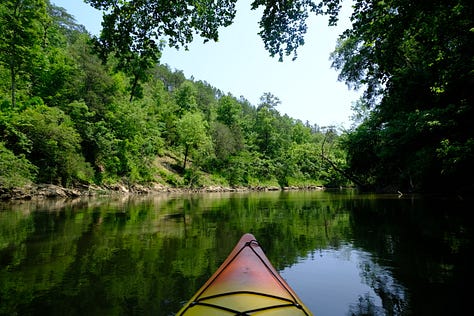
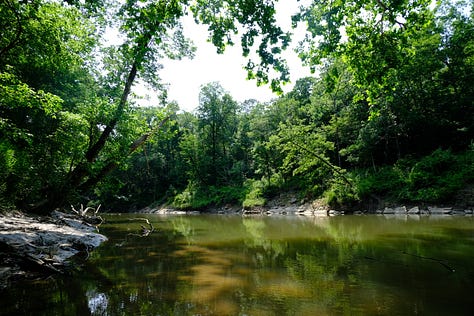
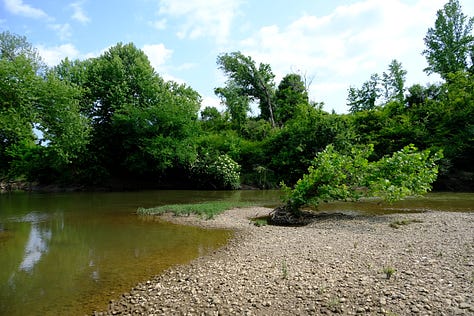
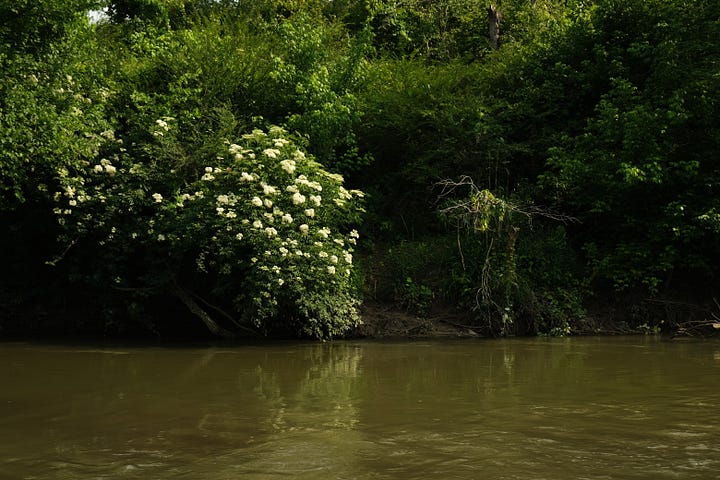
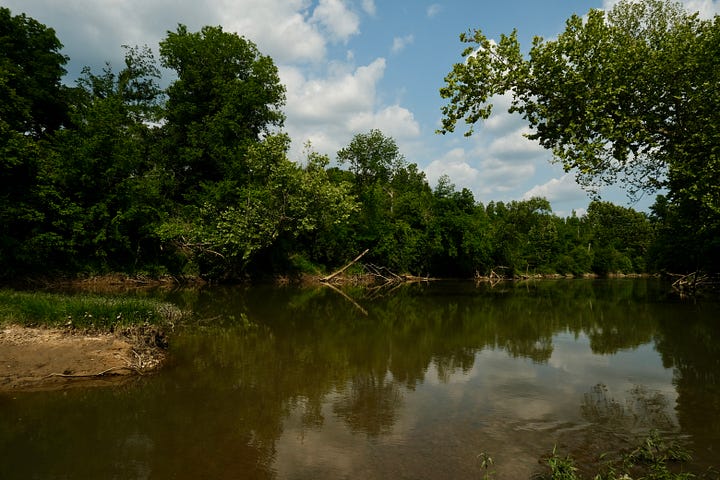
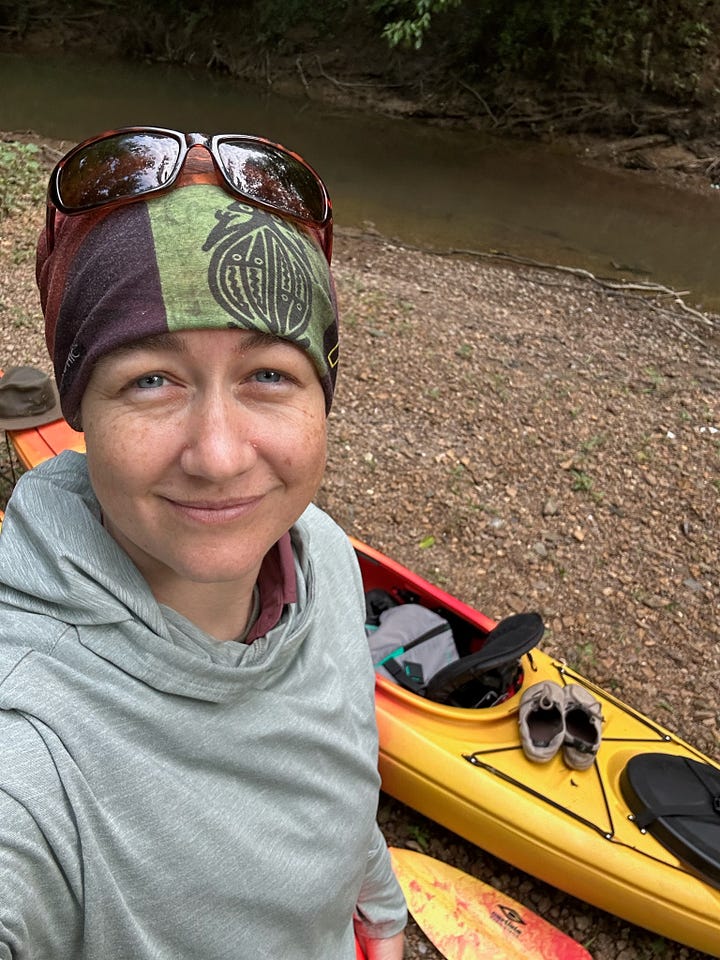
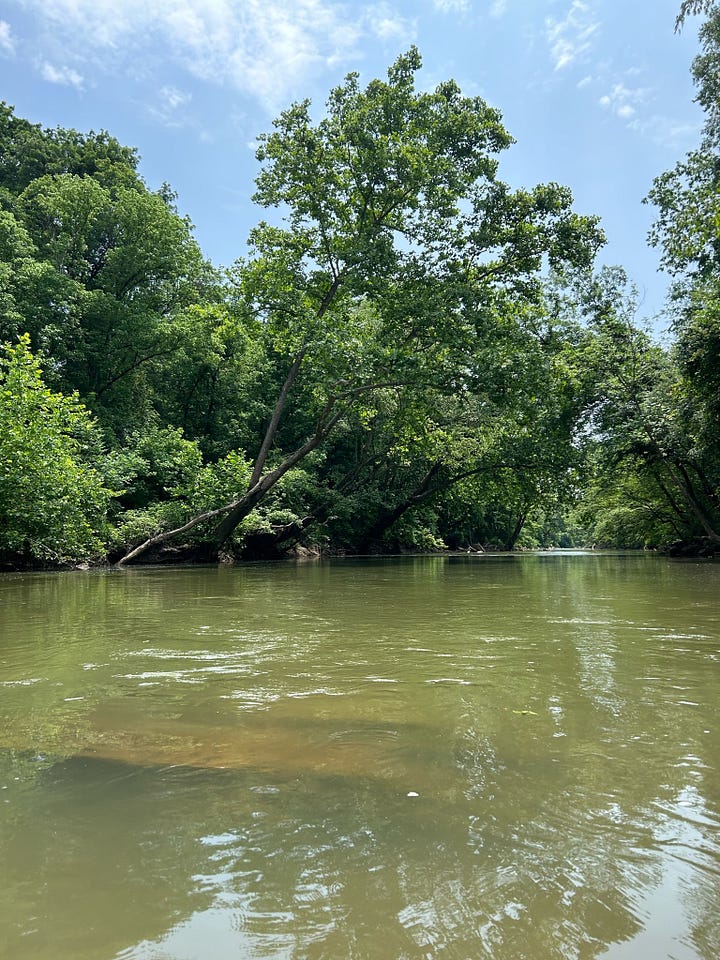
Before I let you go . . .
One of the things about this project is that it comes with speaking engagements. This is wonderful. I’ve loved the ways in which people want to hear about the Cahaba and my experience with it. But I wanted to share with you a moment that’s really meaningful to me and to understand why we have to go back to a 4th grade day when we had a visitor to class. I remember class visitors and field trip days as being some of the most interesting days of school. They busted up the monotony of the regular school day.
On this particular day, our visitor was Steven Newman. This man holds the Guinness Book of World Records for being the first man documented to solo walk around the world. He completed his journey of 4 years in 1987. And when he came to class that day, I was wowed. Here was this real-life adventurer. This Indiana Jones kind of dude, but better because he was real. And I got his autograph too—which is this quirky little scrawl of a walking man with a hat and cane. I thought it was the coolest thing—still do. Steven was inspirational and encouraging to my little 4th grade self who existed on a diet of adventure books, trips to Jack Hanna’s zoo, and episodes of Zoboomafoo with the Kratt Brothers. I never forgot his name. I still have his signature.
I say all this to say, I had my first school visit yesterday to talk about my trip, and this felt like coming full-circle for me. I was so excited to get to share with these kids the same way I was shared with. Often people forget that the smallest folks among us have complex ways of thinking and that the things we learn when we are small craft our adult lives. The kids were SO welcoming. They had prepared poems, drawings, and paintings about my trip (shared below with their permission), and I was absolutely smothered with hugs. They asked me some of the best questions about my venture I’ve heard thus far, and they proudly walked me down to the creek that flows behind their school to show me their own wilderness.
This sort of engagement and excitement is how we need to take care of the river and each other. This is the sort of moment I was hoping this project would create. And I’m beyond grateful to see it come to life. Thank y’all for following along. I’m ever thankful to you for listening and for sharing my love for such a most beautiful and important thing as the Cahaba and our community.
Until next time
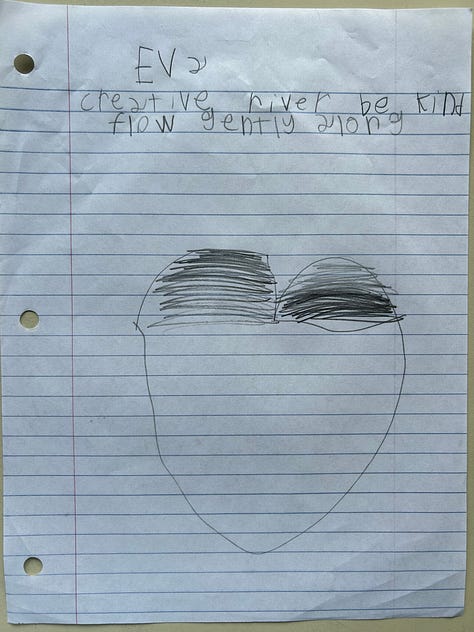
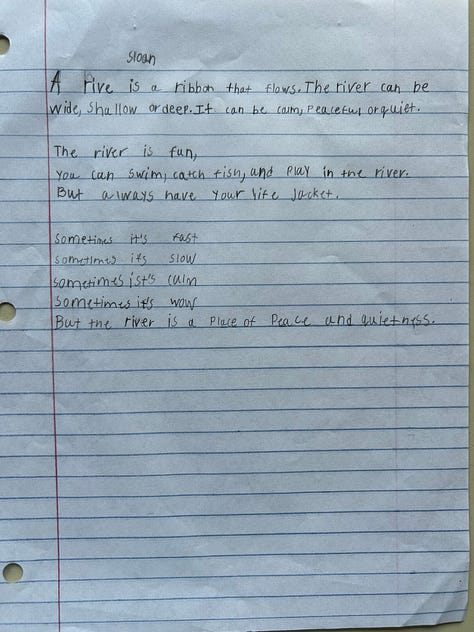
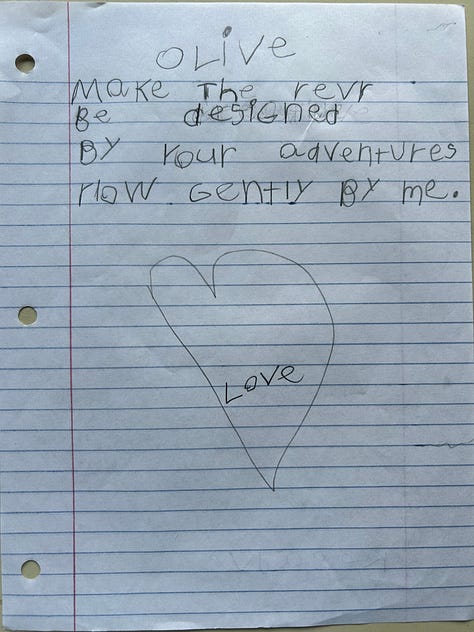

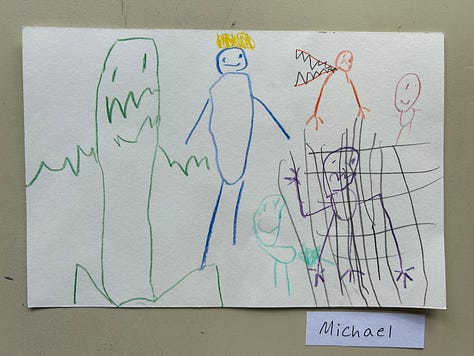
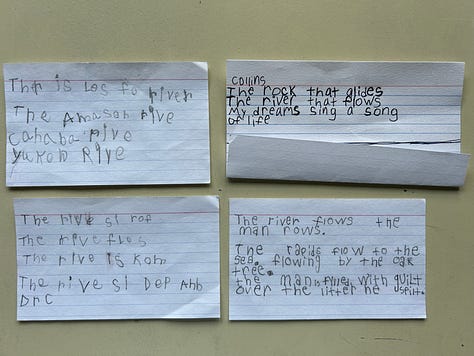
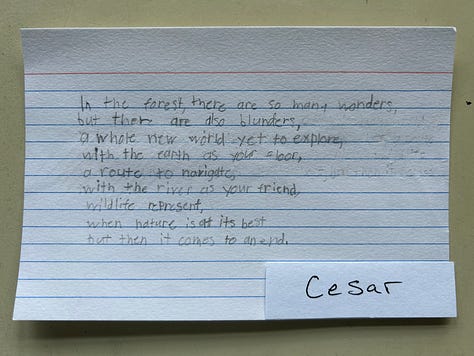
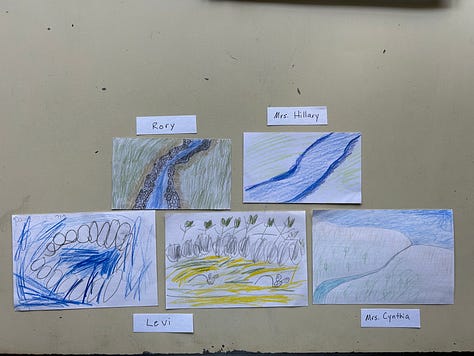
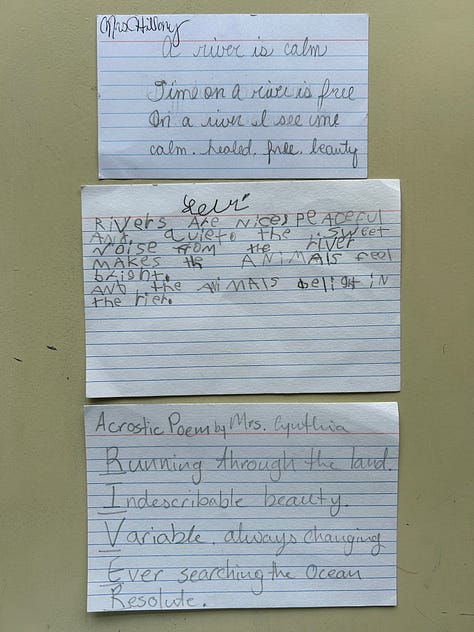

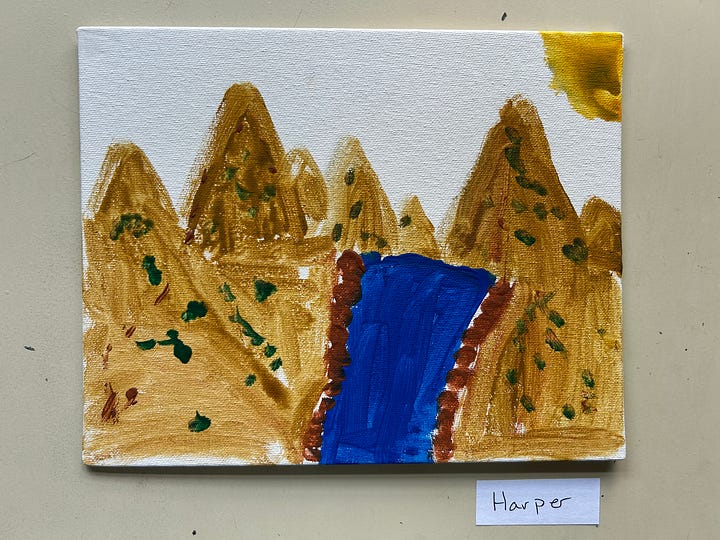


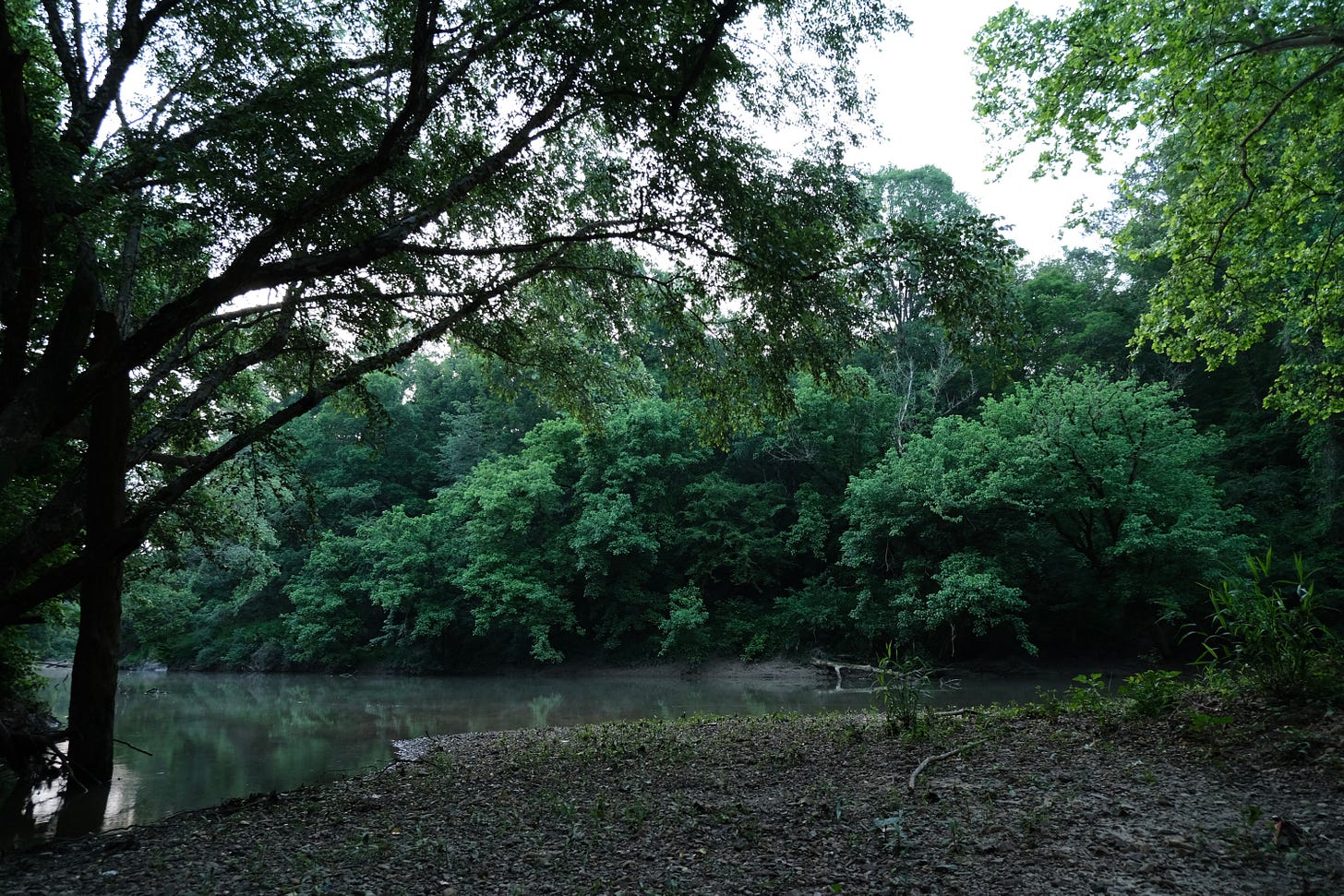
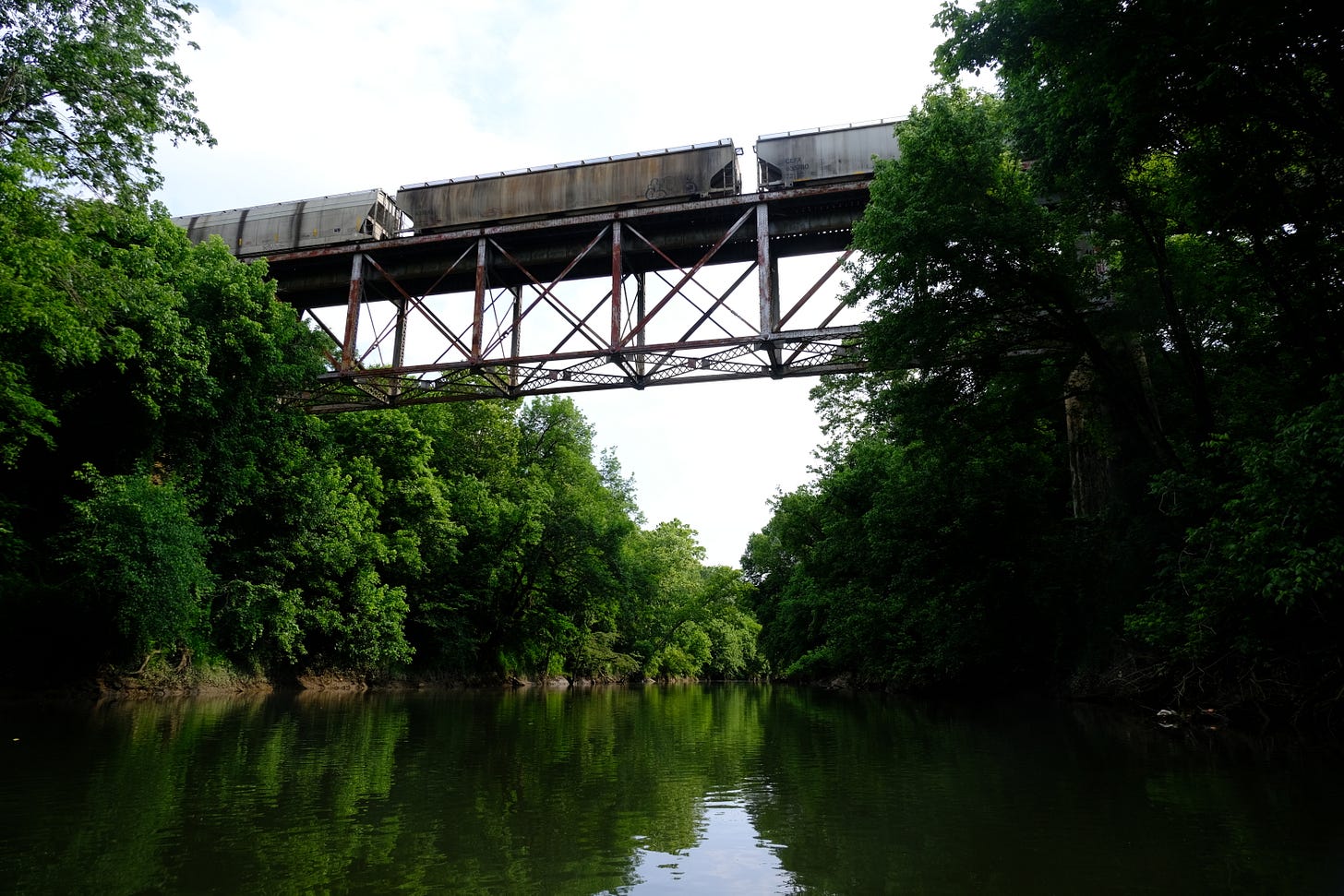
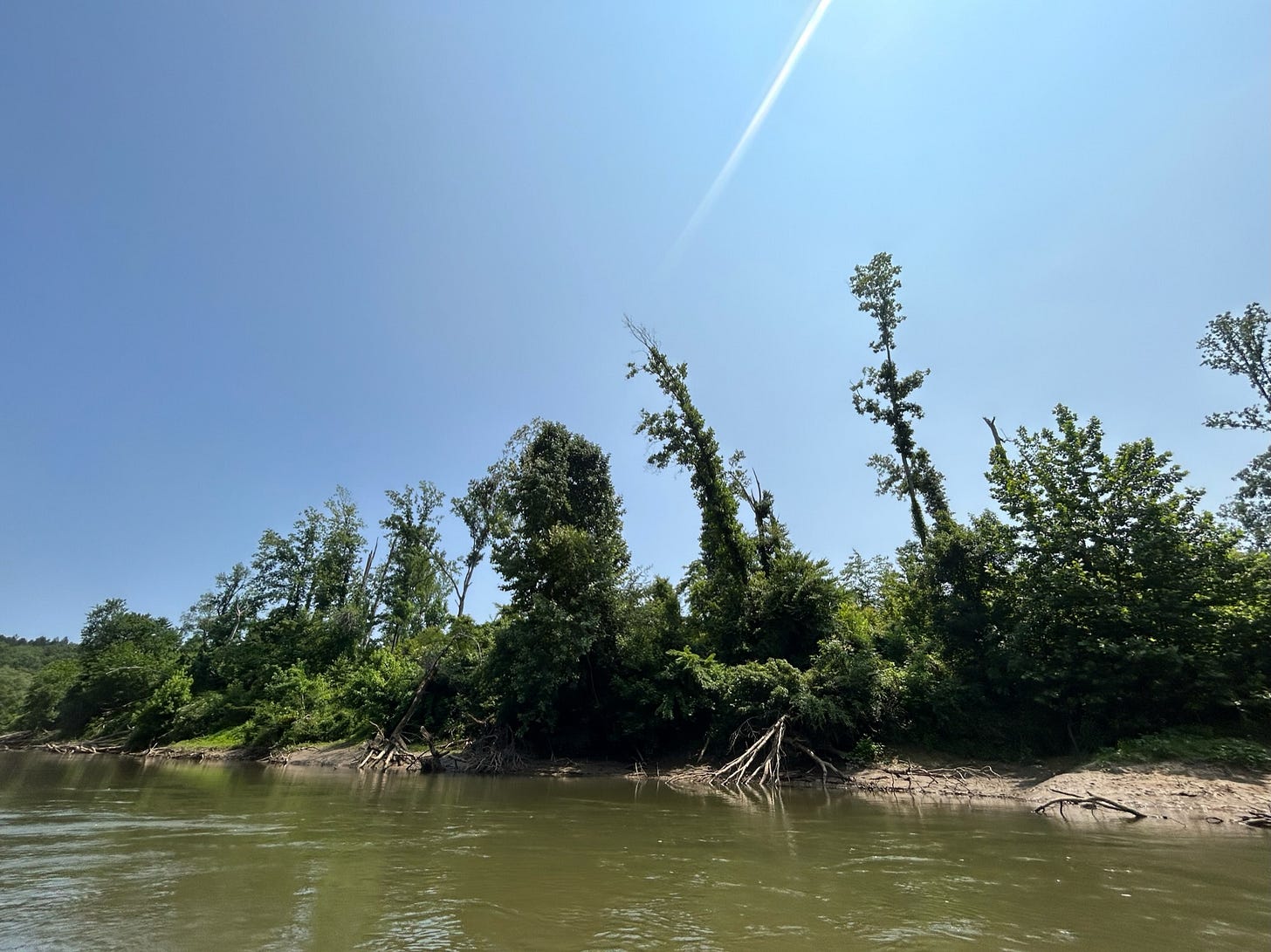
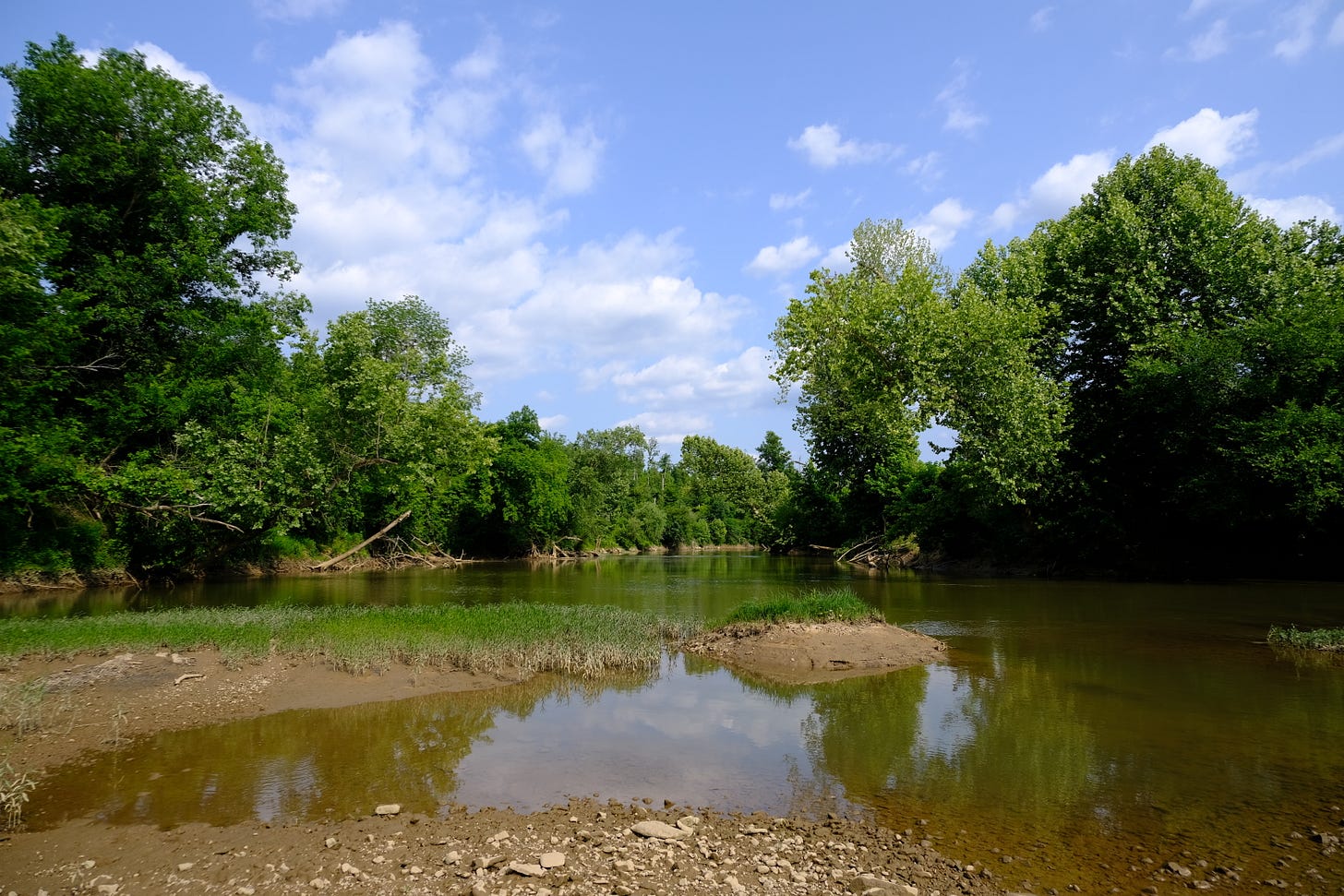

Just wow... gosh, this one made me cry. Look at the impact you are making! In sharing your love of the river, you are encouraging others to have greater awareness and more love for our natural places. This is awesome.
I also love seeing how your intuition seems to be heightening as the days progress. Learning how to listen, indeed.
Thanks for sharing your adventures! Love the gifts from the children. 💕